By Tommy Thomas - Malaysian Bar Council
MARCH 2 – I have been asked to advise whether the Speaker of the Legislative Assembly of Perak was entitled in law to convene the Legislative Assembly on 3rd March 2009.
Ultimately, the issue turns on whether the last meeting of the Assembly in November 2008 was prorogued (“di-berhentikan”) or adjourned (“di-tangguhkan”). If it was prorogued, only the Sultan of Perak (“HRH”) can summon the Assembly: if it was adjourned, then the Speaker can convene.
According to my instructions, what was adjourned sine die in November 2008, was the Third Sitting of the First Session of the 12th Legislative Assembly of Perak. This opinion is written on that factual basis.
A. THE STATE CONSTITUTION OF PERAK
2. The starting point in the analysis is the Laws of the Constitution of Perak, and in particular Articles 36 and 44. Article 36 deals with the summoning, prorogation and dissolution of the Legislative Assembly. Article 36 (1) and (2) read as follows:-
“(i) His Royal Highness shall from time to time summon the Legislative Assembly and shall not allow six months to lapse between the last sitting in one session and the date appointed for its first sitting in the next session.
(ii) His Royal Highness may prorogue or dissolve the Legislative Assembly”.
It should be noted that Article 36 does not deal with adjournment of the Assembly. Article 44 (1) states that the Legislative Assembly shall regulate its own procedure and may make Standing Rules and Orders for “the regulation and orderly conduct of its own proceedings and the conduct of business”. Article 44 (1) recognises the well settled constitutional principle that the Assembly is the master of its procedure, and its sovereignty over its internal affairs cannot be questioned by any external body.
B. THE STANDING ORDERS
3. Pursuant to Article 44 (1) of the State Constitution, the First Meeting of the Second Session of the Seventh State Legislative Assembly of Perak passed Standing Orders on 23rd March 1988. Standing Order (“SO”) 88 is the definition order. The expressions “meeting”, “session” and “sitting” are defined in SO 88 as follows:-
“ ‘meeting’ means any sitting or sittings of the Assembly when the Assembly first meets after being summoned at any time and terminating when the Assembly is adjourned for more than fourteen days or sine die at the conclusion of a sessions”;
“ ‘session means the sittings of the Assembly commencing when the Assembly first meets after being constituted, or after its prorogation or dissolution at any time, and terminating when the Assembly is prorogued or dissolved without having been prorogued”;
“ ‘sitting’ means a period during which the Assembly is sitting continuously (apart from any suspension) without adjournment, and includes any period during which the Assembly is in Committee”.
A review of the definitions given to the 3 terms would indicate that a meeting is the shortest period, followed by a sitting, while a session is of the longest duration.
4. It is significant that the definitions of these expressions in SO 88 reflect their ordinary meaning as the Oxford English Reference Dictionary (2nd Ed. 1996) indicates:-
“adjourn: put off, postpone, break off with the intention of resuming later.
prorogue: discontinue the meetings (of Parliament) without dissolving it.
sitting: a time during which an assembly is engaged in business.
meeting: persons assembled.
session: a period during which meetings of assembly are regularly held.”
5. Adjournment is the subject matter of 3 Standing Orders. Pursuant to SO 15 and 16, upon a motion for adjournment after the completion of all business in a sitting, Mr Speaker is entitled to adjourn the Assembly. The first pre-condition for such adjournment is the completion of all business. What is thus being adjourned is a sitting, and not a session ? a session can consist of numerous sittings. When an adjournment motion made under SO 15 and 16 is carried, Mr Speaker declares “That this Assembly do now adjourn”. The adjournment referred to in SO 17 is entirely different because it entitles Mr Speaker (with the support of the majority of members) to change the order of business of a meeting of the Assembly by permitting a “definite matter of urgent public importance” to be debated on an urgent basis. Thus SO 17 is not relevant for present purposes.
6. It appears as if no express SO gives Mr Speaker the power to recall the sitting of an Assembly that was adjourned by him, as occurred in November 2008. Because what was adjourned in November 2008 was only a sitting, and not a session, what is clear is that HRH’s power to summon does not at present arise because Article 36 (1) of the State Constitution refers to “one session” and the “next session”. If it is not a question of the discretion of HRH to summon a session, then by implication only, Mr Speaker has such power with regard to sittings and meetings of the Assembly. In the event of doubt regarding his power, Mr Speaker can rely on the residuary powers conferred on him under SO 90. Further, a decision or ruling by Mr Speaker on his power is final and not open to appeal pursuant to SO 43 and 89 : only a substantive motion passed in the House can review it.
C. THE BRITISH PRACTICE
7. SO 90 provides that when the Standing Orders are silent on any matter, Mr. Speaker may give directions, “and in giving such direction Mr. Speaker shall have regard to the usages of Commonwealth Parliamentary practice so far as such usages can be applied to the proceedings of the Assembly”. Accordingly, reliance can be made on the practice and procedure of the British Parliament, which is the mother of all Parliaments. Erskine May ’s Treatise on the Law, Privileges, Proceedings and Usage of Parliament is the leading text on the subject in the Commonwealth. I have reviewed the relevant commentary in Chapter 13 in its 23rd Edition (2004).
8. According to the learned authors of Erskine May (all of whom are clerks of the House of Commons):-
“ ‘A Parliament’, in the sense of a parliamentary period, is a period not exceeding 5 years which may be regarded as a cycle beginning and ending with a proclamation.
A session is the period of time between the meeting of a Parliament, whether after a prorogation or a dissolution, and its prorogation. During the course of a session either House (Commons or Lords) may adjourn itself on its own motion to such date as it pleases. Sessions are of indeterminate length but …….usually run from October or November of one year to October or November of the next.
The period between the prorogation of Parliament and its reassembly in a new session is termed a ‘recess’, while the period between the adjournment of either House and the resumption of its sitting is properly called an ‘adjournment’ (although in practice the word ‘recess’ is generally used in this sense also). A prorogation terminates a session; an adjournment is an interruption in the course of a single session.” (my emphasis)
(See Page 272)
9. In a discussion under the caption “Prorogation and Adjournment”, Erskine May states:-
“The prorogation of Parliament is a prerogative act of the Crown. Just as Parliament can commence its deliberations only at the time appointed by the Queen, so it cannot continue them any longer than she pleases. But each House exercises its right to adjourn itself independently of the Crown and of the other House… (my emphasis)
(Page 274)
The difference between prorogation and adjournment becomes clearer from a practical perspective by considering their effect. The effect of a prorogation is to suspend all business, including committee proceedings, until Parliament is summoned again, and to end the sittings of Parliament. Further, all pending proceedings are quashed. An adjournment does not have the same effect on parliamentary proceedings as does a prorogation. Upon reassembling, each House proceeds to transact the business previously appointed, and all proceedings are resumed at the stage at which they were left before the adjournment. Erskine May also discusses the recall of Parliament during adjournment. “When Parliament is dispersed through the adjournment of both Houses its reassembly can be effected either by proclamation or under powers specifically conferred by each House on its Speaker”. (Page 277).
10. A similar distinction between prorogation and adjournment is made in Halsbury Laws of England (4th Ed, 1997 Reissue) in Vol. 34 : see Paragraphs 720 to 727. In Paragraph 720 under the heading “Power of each House to adjourn”, Halsbury states: “Each House of Parliament has the power to adjourn its sittings for any period of time to be determined by an Order of the House. Power is given by standing orders of the two Houses to the Lord Chancellor and the Speaker respectively, if they are satisfied that the public interest requires it, to summon the Houses to meet on an earlier date than that to which they have been adjourned”. (my emphasis)
11. The practical advantages of an adjournment over a prorogation are discussed by Eric Taylor in “The House of Commons at Work” (9th Ed. 1979) as follows:-
“Since the beginning of the last war it has been thought better not to prorogue on 31st July, after all, but merely to adjourn the House for the summer, the reason being partly that it is more difficult to summon the House together again quickly after a prorogation, and during an adjournment the Speaker has power to summon it in case of emergency. This expedient was felt to be necessary during the uneasy war and post-war years. It is also useful to have a week or so after the Recess to clear up odd business. In any case the result was that the House was, and still is solemnly prorogue one day, and solemnly opened again by the Queen a day or two later, there being now no intervening Christmas holiday. (my emphasis)
It may occur to the reader to ask why Parliament is prorogued at all, and why the House should not remain in Session from the time that it is elected until the time that it is dissolved, and a new Parliament is elected.
The natural answer will be that Parliament likes to “clear its books”, just as a business firm clears its book at the end of a financial year. All Bills which have not reached the statute books by the end of the Session are killed automatically by prorogation. All notices of motions disappear from the Order Paper. It is a drastic but quite salutary process.”
(Page 52)
12. These practical aspects are also considered in a leading British constitutional law text. In “Constitutional and Administrative Law” by de Smith and Brazier (8th Ed, 1998), the following commentary appears:-
“Sessions: prorogation and adjournment. It is the invariable custom for the life of a Parliament to be divided up into a number of sessions. These are usually of about one year’s duration, though there is no fixed practice……..;
……Nowadays the Commons sit for about 180 days altogether during a calendar year. Each House determines, on the Government’s initiative, on which dates it will adjourn and reassemble…….;
…..A session of Parliament is terminated by prorogation, a prerogative act; a short formal speech is made on behalf of the Queen, summarizing the work done during the session, and the Parliament stands prorogued till a named dated, which (unless prorogation precedes a dissolution) will be only a few days later, when a new session will be opened by the reading of the Queen’s speech…….;
…..The reason why Parliament is adjourned, instead of standing prorogued, in midsummer is strictly practical. In the first place, if it becomes necessary to recall a prorogued Parliament to deal with a matter of unexpected urgency, a royal proclamation has to be issued. It is simpler and may be more expeditious to reassemble an adjourned Parliament; this can be done by the Speaker and the Lord Chancellor acting on the Prime Minister’s quest…...” (my emphasis)
(Page 230)
13. It is thus plain and obvious that the Speaker in the elected House of the British Parliament, the House of Commons, has the discretion to recall the House during an adjournment, which is factually a different category from prorogation. Thus, the Speaker of the Perak Legislative Assembly is entitled under SO 90 to “have regard to the usages of Commonwealth Parliamentary practice”, in this case, the settled practice in the House of Commons, as to his own power to convene a sitting of the Assembly during adjournment.
D. CONCLUSION
For these reasons, in my opinion, Mr Speaker is lawfully empowered to convene the Fourth Sitting of the First Session of the 12th Legislative Assembly of Perak on 3rd March 2009.
Dated this 1st day of March, 2009.
Tommy Thomas
Malaysian Bar Council
Subscribe to:
Post Comments (Atom)
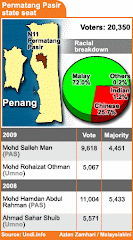

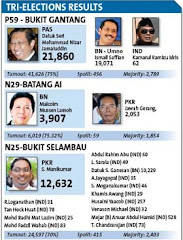

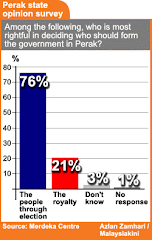
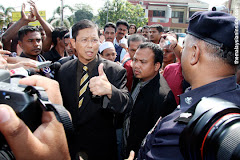
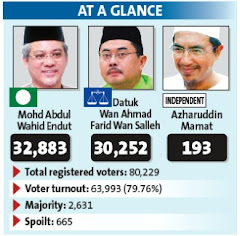


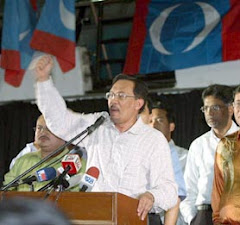

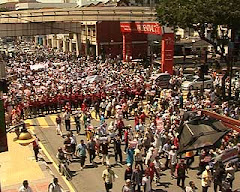


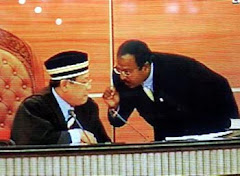


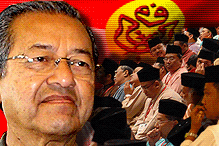

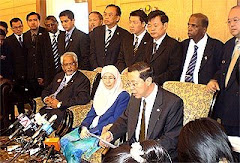
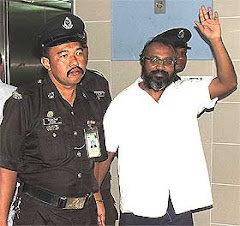



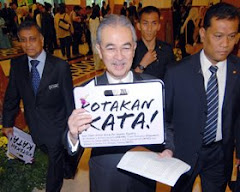
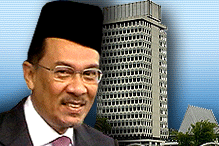
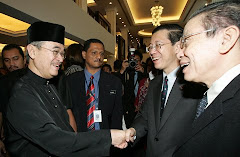






No comments:
Post a Comment